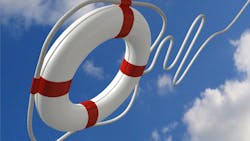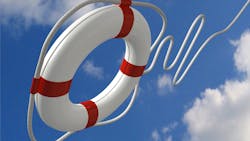Ergonomics Could Prevent a ‘Boatload’ of Work-Related Accidents
But despite the difficult working conditions, when it comes to preventing injury, the science of ergonomics can help. A new safety initiative at the Alaska Marine Safety Education Association (AMSEA) funded by a $100,000 OSHA grant aims to prevent injuries in the fishing industry by improving the way occupational tools are used while working.
“Ergonomics is the science of adapting your workplace, your tools, equipment and work methods to be more efficient and comfortable and error free by humans. It’s basically how a human body interacts with their work environment,” explained Jerry Dzugan, director of the Sitka-based AMSEA.
According to the Alaska Fishermen’s Fund, 40 percent of all personal injury claims are due to sprains and straining related to the job’s heavy lifting, pushing and pulling.
“The goal is to reduce the muscular and skeletal disorders that are pervasive in the fishing jobs,” Dzugan said. “Everyone I know who fishes can all tell me about their carpal tunnel, their tendonitis, their shoulder problems or their lower back problems.”
The grant aims to create new tools that reduce weight loads while lifting. Tools such as knives and fish scrapers will be improved, contributing to a safer working environment. Training on mechanical drills and other machinery also will be included in the new program.
Reduce the Risk of Carpal Tunnel and Tendonitis on the Job
While new equipment and training procedures will help reduce the risk for injury among fishermen, those employed in the occupation can reduce their personal risk with these additional tips.
1. Change activities throughout the day. Don’t repeat the same task throughout the day, if you can. Change up your activities regularly and try alternating tasks to avoid overextension or overuse of your muscles and tendons.
2. Stretch regularly. It’s a good idea to stretch your hands and wrists on intermittent breaks throughout the day. Bend hands and wrists in the opposite direction of typical motions.
3. Keep muscles warm. A warm muscle or tendon is less likely to sprain. Keep yourself warm on the job by wearing down vests and tall, insulated gloves, and use hand-warmers on downtime.
About the Author: Michael Pines founded the Law Offices of Michael Pines, APC, in San Diego in 1992. He is an accident and injury prevention expert in San Diego, and he is on a campaign to end senseless injury one blog at a time.

